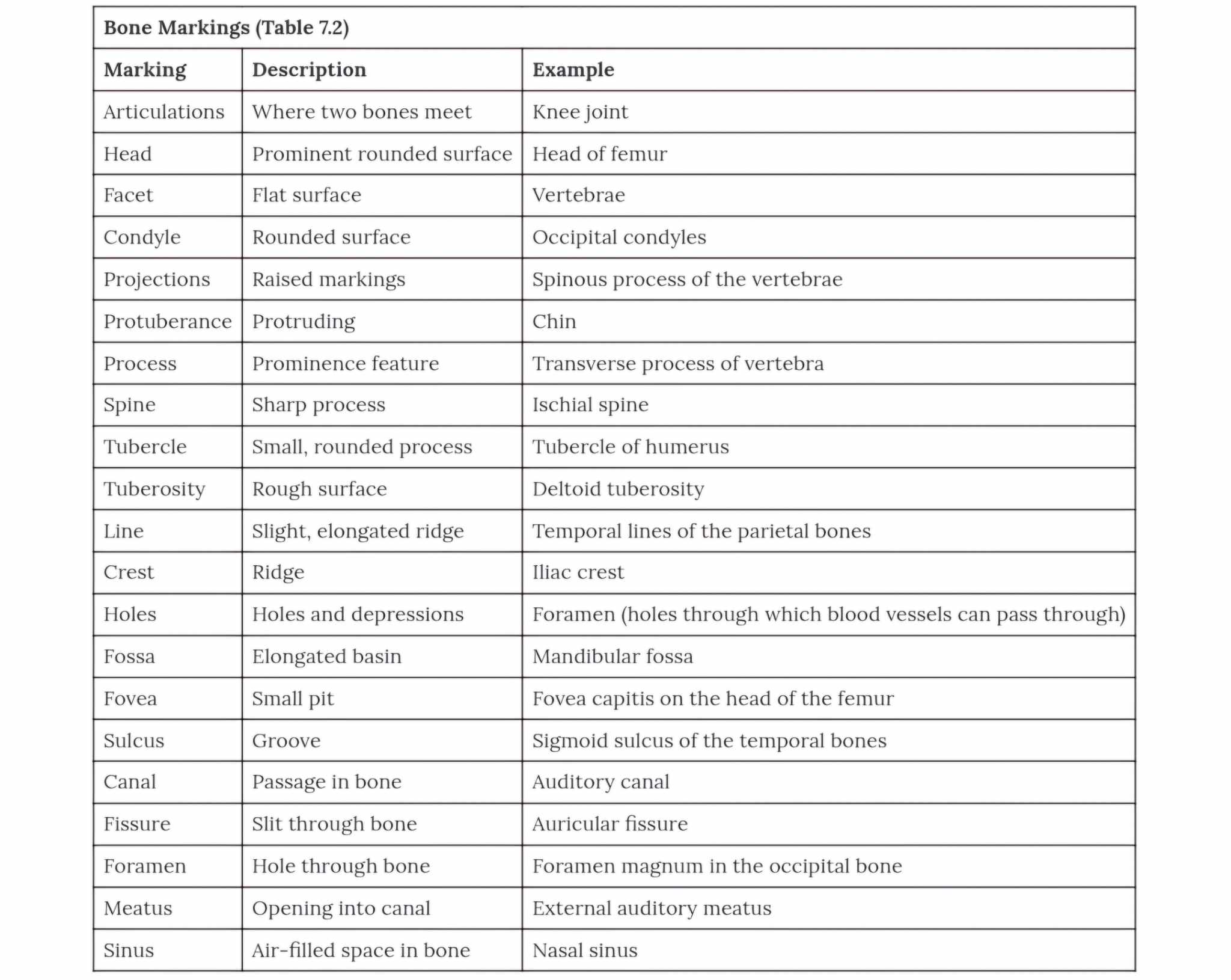What are the different types of bone markings and their descriptions?

Understand the Problem
The image contains a table that outlines various bone markings, their descriptions, and examples. It's likely intended for educational purposes in anatomy or related fields, focusing on the features of bones.
Answer
The types of bone markings include articulations, head, facet, condyle, projections, protuberance, process, spine, tubercle, tuberosity, line, crest, holes, fossa, fovea, sulcus, canal, fissure, foramen, meatus, and sinus.
Different types of bone markings include: articulations, head, facet, condyle, projections, protuberance, process, spine, tubercle, tuberosity, line, crest, holes, fossa, fovea, sulcus, canal, fissure, foramen, meatus, and sinus.
Answer for screen readers
Different types of bone markings include: articulations, head, facet, condyle, projections, protuberance, process, spine, tubercle, tuberosity, line, crest, holes, fossa, fovea, sulcus, canal, fissure, foramen, meatus, and sinus.
More Information
Bone markings are categorized generally into articulations (where bones meet), projections (for attachment of muscles and ligaments), and holes (allows the passage of nerves and blood vessels). Each has distinctive shapes and purposes critical for the anatomy and functionality of the skeletal system.
Tips
A common mistake is confusing similar terms like tubercle and tuberosity. Remember that tubercle refers to a smaller, rounded process, while tuberosity is a larger, rough projection.
Sources
- Bone Markings – Anatomy & Physiology - Oregon State University - open.oregonstate.education
- Anatomy, Bone Markings - StatPearls - NCBI Bookshelf - ncbi.nlm.nih.gov
- Complete list of bone markings - Kenhub - kenhub.com
AI-generated content may contain errors. Please verify critical information